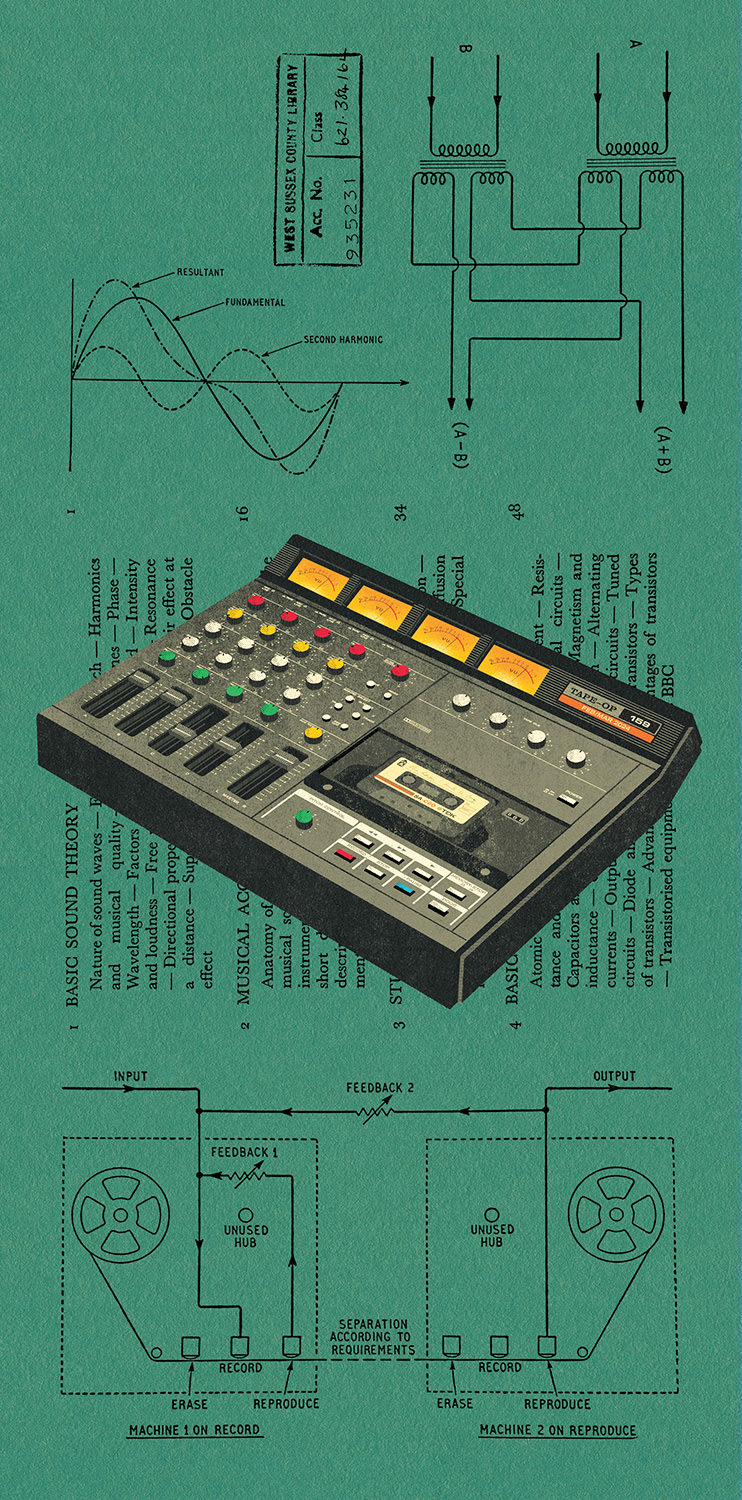“What is this crazy thing?” is the heading of the second paragraph in Kludge Audio’s instruction manual for the one knob / two toggle switch 509 Rotating Limiter. Before slotting this single-channel unit into my 500 Series chassis, I was giddy at its perceived simplicity. I’m a big fan of gear that (seemingly) does one thing to perfection. This one thing is a super-fast limiter with very few compression artifacts – a “bringer-up-fronterer,” if you will. However, the more I used the 509 Rotating Limiter and futzed with activating/deactivating the phase rotator (ROT), the deeper this unit got – and I hadn’t even been paying attention to the LED yet, which didn’t seem to be necessarily tracking the amount of gain reduction going on. Head scratching ensues. Time to actually read the manual, I guess.
I don’t like reading manuals or instructions – my partner no longer allows me to assemble new Ikea furniture unsupervised. However, because the 509 Rotating Limiter is so unique (despite its simple appearance), and I was too dumb to figure it out myself, I read all three and a half pages, got another cup of coffee, and then read it again.
After extended use, the 509 Rotating Limiter’s extremely fast gain reduction, low artifacts, and clean or dirty quality (input level dependent) reminded me of my Spectra Sonics [Tape Op #102] 610 Complimiters. It’s true; comparisons can seem a lazy way to comfort the unfamiliar. However, I thought I should get familiar with the 509’s limiter first to get my head around what the phase rotator is doing. I tried the limiter with the phase rotator bypassed on every source I could: kick, snare, hi-hat, toms, drum room mic, electric bass, electric guitar, acoustic guitar, lead vocals, etc. As stated earlier, the LED wasn’t giving me much of an indication of limiting. With the single, large threshold knob, I had to trust my ears to get the threshold right. For most applications, distorting the limiter did not sound cool (maybe a little on the drum room mic, and the bass guitar DI – sometimes snare). It’s essential to get the level into the 509 set correctly so it’s not distorting. Once that’s accomplished, it can be difficult to perceive how much you are actually limiting the source since typical gain reduction telltales aren’t bugging your ear. I had to look at the resulting waveform in my DAW to see what the 509’s limiter was really doing. I’d expected an opto limiter to be slower and less aggressive, but it’s fast as hell, and I don’t hear the forward character of traditional limiters. This unit excels as a leveling style limiter – catching occasional peaks on sources like vocals (dialogue and singing), and works well following a slower, gain-riding compressor. Though originally designed as a broadcast-style limiter, with a super-fast attack, hard knee, and speedy decay, the harder you push the gain reduction, the slower the decay becomes.
Along with its speed and transparency (when the input level is set correctly), the phase rotator adds the hat trick, making the 509 Rotating Limiter different from any other compression tool I’ve used. The phase rotator (at times) can almost feel like a transient shaper. There are no controls for this functionality other than on/off. The phase rotator is a gradually shifting frequency-dependent polarity reverser based on the source. At 700 Hz the frequency will have a 90 degree shift, and high frequencies will be flipped 180 degrees out of phase via an analog all-pass filter and crossover. This all sounds scary at first. However, the idea, as far as I can tell (and have experienced), is to even out transient-heavy, asymmetrical waveforms before the compression occurs, and it frigging works! I’ve messed around with using only the phase rotator function of the 509 with standard gain reduction units, such as Universal Audio LA-2A and 1176-style, plus the dbx 160 with some useful and very cool results – 1176 with all-buttons-in and the 509’s phase rotator in front of it? Please – this is how rock drum room mics should sound!
Whenever I found the limiter function to be the wrong choice for the source, I activated the phase rotation (ROT) switch, and 70% of the time – again with the input level to the 509 set carefully – there was an improvement. Of course, if you limit every source in your mix you’re just fucking with your mastering engineer. However, when you’re losing a critical element of the mix with one or two sources that either need some transient attack (flabby kick or fingered bass DI) or a leveled-out performance (main vocal, snare top, strings, or guitar and horn solos), the 509 is just the trick! I almost forgot to mention how rad this was for “shaping” effect-y acoustic piano tracks. The more familiar I become with this unit, the more purpose it finds in my mixes.




_disp_horizontal_bw.jpg)